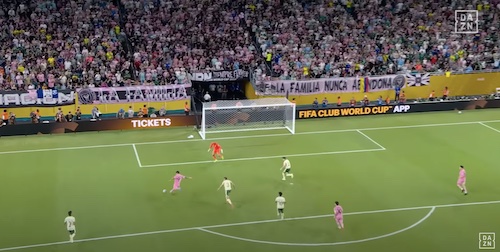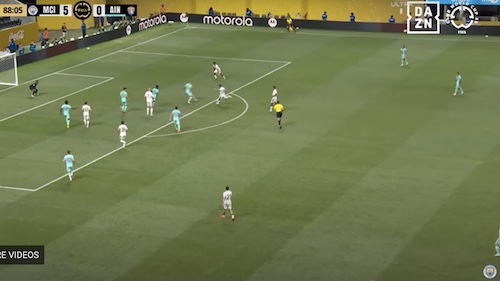Confederations Cup PreviewBy Paul Oberjuerge At first blush, South Africa seems like an awfully long way to go for the United States national soccer team to be kicked around by Italy and Brazil. With upset-capable Egypt — playing on its home continent and better than American fans realize — waiting in the wings. But upon further review, this is a good tournament for the U.S., no matter how the results turn out. –It gives the national team a feel for the Republic of South Africa, a country usually well off the international soccer radar but host nation for the 2010 World Cup. –It provides the Americans with first-tier competition in a year otherwise dominated by matches against continental rivals, teams capable of moments of inspiration but not exactly candidates to survive the first round of the next (or any) World Cup. –It represents a different sort of crucible for a U.S. team that seems more than a little unsure of its style and its lineup only a year out from the World Cup. "This is a perfect opportunity to understand what South Africa is like, what some of the stadiums are like, what the people, the game, the culture is going to be like," said U.S. forward Landon Donovan. "For us, this is an incredible opportunity." It is an incredible challenge, as well. The U.S. opens the tournament with a match against defending World Cup champion Italy on Monday, gets five-time world champion Brazil on Thursday and completes pool play vs. Egypt on June 21. This, after a 28-hour journey earlier this week from Chicago to Pretoria, by way of Washington D.C., Dakar and Johannesburg. Going from the steamy Midwest to the cool, almost chilly late-autumn clime of Pretoria, some 4,500 feet above sea level. The U.S. team arrived at its team hotel to the sights and sounds of singing and dancing children. The Confederations Cup often is belittled by soccer traditionalists as a pointless exercise invented by FIFA president Sepp Blatter to insert another international event into the already crowded soccer calendar. But it has elements that make it interesting. Foremost is the tournament as an early test of South Africa’s organizational skills. Doubts have been expressed, particularly in Europe, about the wisdom of awarding the World Cup to what is still a Third World country. But South African officials insist they will be ready for the 2010 World Cup, and a smooth Confederations Cup would be a strong piece of evidence to support that view. The idea of six continental champions gathering, along with a host nation and the defending World Cup champion, has a sort of cachet to it, as well. It is exotic. The U.S., for example, can hardly invent three qualify opponents with such different styles as Italy, Brazil and Egypt. The tournament is fairly intense and brief. The whole thing will be over in 15 days, and half the eight-team field will be returning home a week after its first match. One obvious failing in this tournament is the massively uneven distribution of talent between Group A and Group B. Group B is the U.S.-Italy-Brazil-Egypt foursome, and is made up of nations currently ranked 4 (Italy), 5 (Brazil), 14 (U.S.) and 40 (Egypt) in the world. Group A has Spain, the top-ranked team in the world and the Euro 2008 champion, but includes three minnows, as they would say in England — South Africa, Iraq and New Zealand, ranked 72, 77 and 82 in the world, respectively, In point of fact, the groups appear designed to give the host country a great opportunity to ride into the semifinals; the top two teams from each group advance to the semifinals. Unlike some previous editions of the Confederations Cup, even the soccer powers appear to be taking this tournament seriously. Brazil’s first team is here, including Kaka, Robinho, Daniel Alves, Maicon and Julio Cesar. Italy is sending most of the starters of its 2006 World Cup team, including Luca Toni, Alberto Gilardino, Gennaro Gattuso, Fabio Cannavaro, Gianluca Zambrotta and Gianluigi Buffon. Spain is represented by Fernando Torres, Cesc Fabregas, Xavi, David Villa and Iker Casillas. Given those lineups, soccer aficionados are looking forward to the Italy-Brazil match on June 21, as well as Spain vs. Italy or Brazil in one semifinal and, presumably, Spain vs. Italy or Brazil in the June 28 final at Johannesburg. All matches in the tournament will be televised on ESPN or ESPN2 and can be seen in the U.S. at times varying from 9:55 a.m. to 2:55 p.m. EDT (6:55 a.m. to 11:55 a.m PDT). Spanish-language broadcasts also are available in the U.S. on Galavision, Telefutura or Univision. The tournament begins Sunday with an interesting match between the hosts and Iraq, now coached by the peripatetic Bora Milutinovic. South Africa will be expected to win, but Iraq provided the Feel Good story of the 2007 international soccer year by winning the Asian Cup and seems to be rounding into form under Milutinovic’s ministrations. South Africa is led by midfielder Steven Pienaar, who plays for Everton in the English Premier League; Iraq’s top players are forward Younis Mahmoud and midfielder Nashat Akram. The test for the U.S. will be getting out of the first round, which seems a tall order, with Italy and Brazil in the way. The Americans have been uneven in 2009, losing heavily (3-1) at Costa Rica on June 3, tying at El Salvador and scrambling from behind to win in Chicago over Honduras. The team has struggled to score goals primarily because it has been unable to generate scoring chances out of the run of play. This is a team heavily dependent on restarts and taking advantage of its height advantage against its CONCACAF rivals. Coach Bob Bradley has juggled his lineup time and again, but nothing has clicked. Bradley has to be hoping that this tournament helps clarify things. Even if it means eliminating players from his 2010 plans. The Americans are without forward Brian Ching and right back Frankie Hejduk, both down with injuries. That leaves one forward berth up for grabs, next to Jozy Altidore. Conor Casey could be the man. Bradley is experimenting almost game by game with his outside backs, but considering Jonathan Spector and Jonathan Bornstein were on the field for the 2-1 victory over Honduras, it would be reasonable to expect they will start against Italy. The midfield also has been in chaos. Michael Bradley, the coach’s son, will start in the middle of the field, but who plays in the holding role is open to speculation (Ricardo Clark, Benny Feilhaber, Pablo Mastroeni and Sacha Kljestan are the leading options). Landon Donovan and Clint Dempsey figure to play on the flanks, unless Bradley chooses to slot one of them up top, with Altidore. Tim Howard will be in goal, and will have Carlos Bocanegra and Oguchi Onyewu in front of him, barring a flareup of the hamstring tweak Bocanegra suffered during the Honduras match. The U.S. managed a 1-1 draw with Italy in the 2006 World Cup, finishing with only nine men on the pitch. But the other five matches against Italy all have been U.S. defeats. The Americans’ greatest hope is that Italy, like many European teams, will be uncomfortable playing outside its home continent. The Yanks are 1-12-0 all-time against Brazil, and were riddled for four goals by the Selecao in a friendly in Chicago in 2007. If the Americans are out of the running by the time they get to the Egypt match, look for a batch of the younger players to get on the pitch as a sort of tuneup for the Gold Cup, which begins next month. So, no, the Confederations Cup doesn’t mean much, but it offers some interesting soccer in what otherwise would be a fallow summer season. Paul Oberjuerge writes about soccer for the NY Times soccer blog Goal. He can be reached at: paul.oberjuerge@gmail.com |
Confederations Cup Preview















